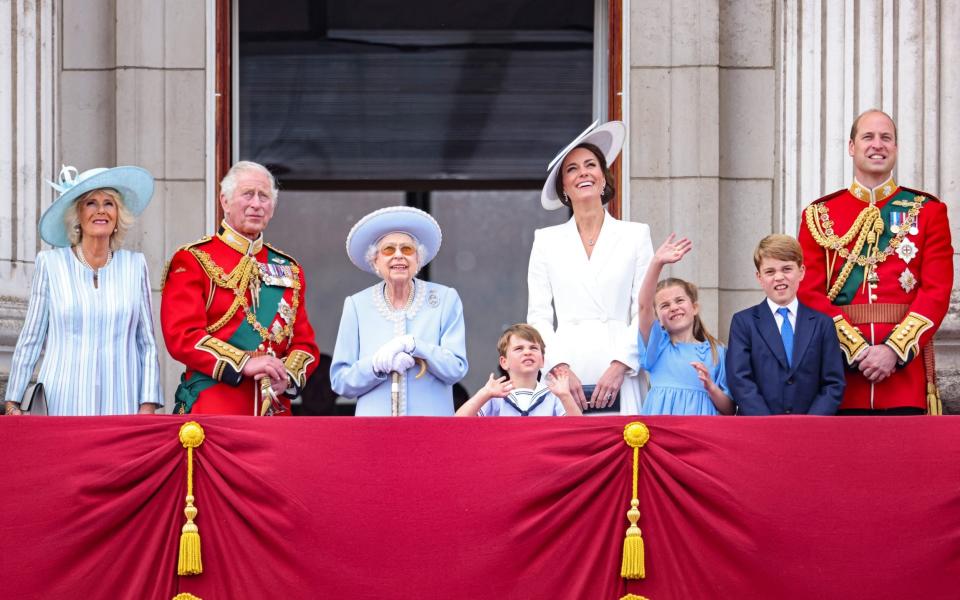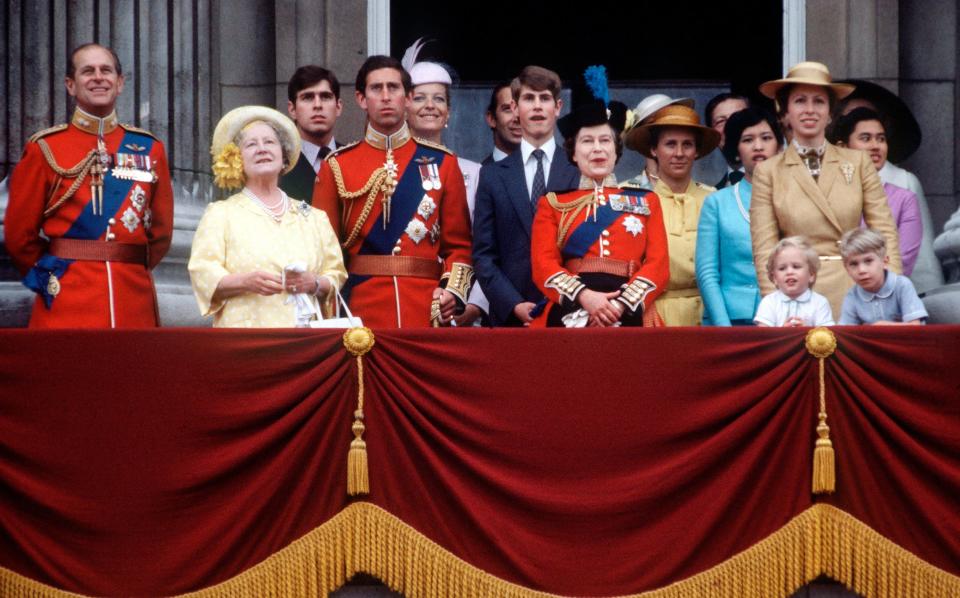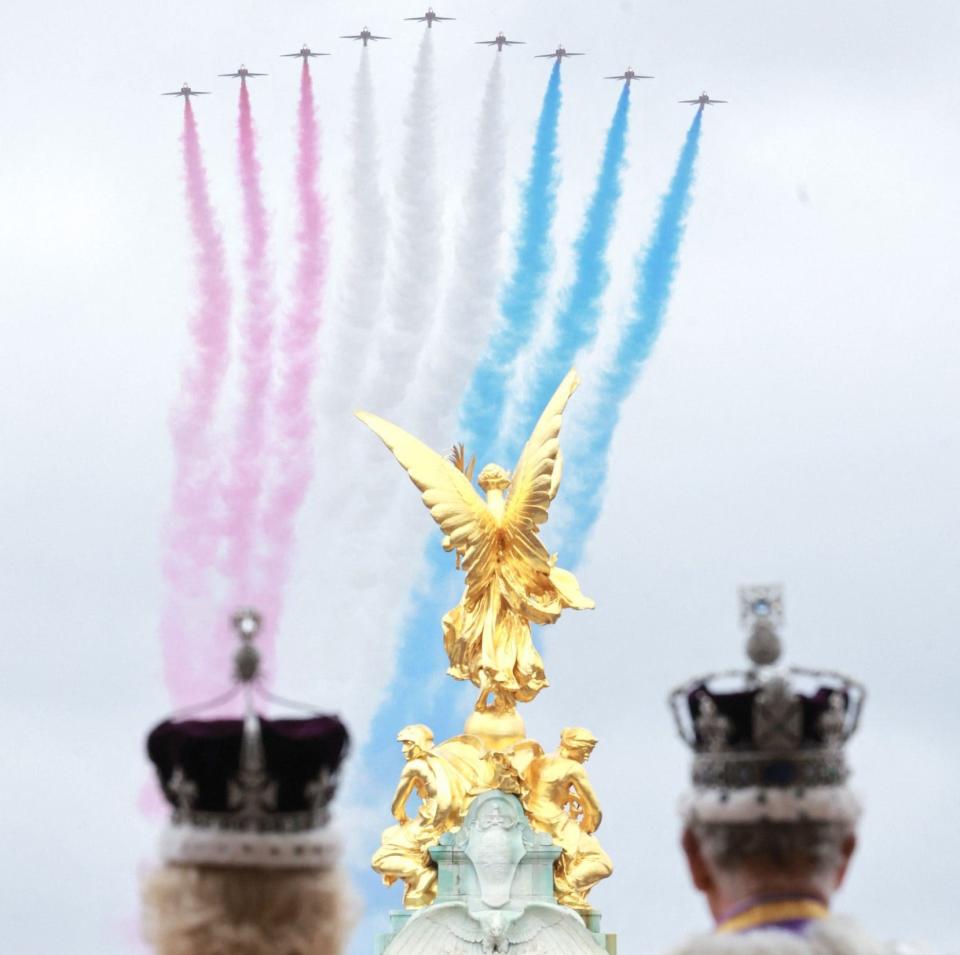Trooping the Colour: When is the King's birthday parade and how will it differ?

Trooping the Colour in June will be the King’s first as sovereign and will be especially large this year.
The annual event to mark the monarch’s official birthday will feature every regiment of the Household Division for the first time in more than 30 years.
The impressive display of pomp and pagentry will feature hundreds of soldiers, horses and musicians, as they file down The Mall to Horse Guards Parade in a ceremony dating back over 200 years.
Here, The Telegraph outlines everything you need to know ahead of the ceremony later this month.
What is Trooping the Colour?
Trooping the Colour is a ceremony that has marked the official birthday of the British sovereign for the last 260 years.
It is a military event which involves over 1,400 parading soldiers, 200 horses and 400 musicians in a procession from Buckingham Palace to the Horse Guards Parade in St James’s Park.

It is set to take place on June 17, but is also preceded by two other reviews in the proceeding weeks; one reviewed by The Major General, and the second reviewed by The Colonel of the Regiment.
When is it and where does it take place?
Trooping the Colour will be held on Saturday, June 17, beginning at 10am.
The parade route extends from Buckingham Palace along The Mall to Horse Guards Parade, and then back again.
What will happen on the day?
During the official parade, the King will be greeted by a Royal salute and will carry out an inspection of the troops.
After the massed bands have performed a musical ‘troop’, the escorted regimental colour will be carried down the ranks. This year, the Welsh Guards will troop their colour.
The Foot Guards and the Household Cavalry will then march past the King, before the King’s Troop, Royal Horse Artillery, file past.
The King then rides back to Buckingham Palace at the head of his Guards, before taking the salute at the Palace from a dais.

After the parade, the Royal Horse Artillery will fire a 41 Gun Salute in Green Park before the troops return to their barracks.
The King will then join other members of the Royal family on the palace balcony for a fly-past by the Royal Air Force.
Why do they call it Trooping the Colour?
Trooping the Colour takes its name from a historical parade designed to aid soldiers’ recognition of their regiment ahead of battle.
The regimental flags of the British Army were historically described as ‘Colours’ because they displayed the uniform colours worn by soldiers belonging to different units.

The principal role of a regiment’s colours was to provide a clear rallying point on the battlefield for their troops, because it was easy for soldiers to become separated from their unit during conflict.
The colours were displayed regularly so that troops knew what they looked like. This display was performed by young officers who marched in between ranks of troops with the Colours held high. This tradition is where the word ‘trooping’ originated.
This year, the honour falls to the Welsh Guards, of which the King was Colonel for more than 50 years before he handed over the responsibility to his son in December 2022. He also held the title of Prince of Wales for almost 65 years.
It will mark the second large ceremonial role for the Welsh Guards in two months, after they played a leading part in the King’s Coronation in May. It also comes after they returned from intense jungle training in Belize and Jamaica earlier this year.
The music which will keep the parade on time this year will also have a distinctly Welsh theme, as new pieces have been composed by members of the Band of the Welsh Guards specifically for the occasion.
How can I watch the ceremony?
The BBC is broadcasting the entire event for those wishing to watch from home.
Those wanting to watch the spectacle in person can stand along The Mall or on the edge of St James’s Park overlooking Horse Guards Parade.
People are advised to get there by 9am as the event will begin at approximately 10am.

Tickets for the seated stands around Horse Guards Parade are allocated by ballot and members of the public can apply for up to four. Tickets costs £30 each.
Who is participating in the ceremony?
It is the first time in more than 30 years that every unit in the Household Division will be taking part.
The ceremony will include the Grenadier Guards, Coldstream Guards, Scots Guards, Irish Guards, Welsh Guards, the London Guards (Army Reserve), and The Life Guards and The Blues and Royals of the Household Cavalry Mounted Regiment.

As senior members of the Royal family normally hold the appointment of Colonel-in-Chief of the regiments of the Household Division, we can expect many of them to be taking part in the procession too.
The King and Queen, the Prince and Princess of Wales, the Princess Royal, the Duke of Edinburgh and the Duke of Kent will all likely take part in the procession.
The regiments and their Colonels are as follows:
The Blues and Royals - The Princess Royal
Grenadier Guards - The Queen
Irish Guards - The Princess of Wales
Welsh Guards - The Prince of Wales
Scots Guards - The Duke of Kent
London Guards - The Duke of Edinburgh
The Life Guards - Lieutenant General Sir Edward Smyth-Osbourne KCVO CBE
Coldstream Guards - Lieutenant General Sir James Bucknall KCB CBE
Which Royals will be there?
All working members of the Royal family will be in attendance, some on horseback in the parade and others following in carriages.
It is not yet known whether non-working members will make an appearance, but it is expected that Prince Andrew may attend, but without any formal role.
However, the Duke and Duchess of Sussex are not expected to attend this year and will likely remain at their home in California.


They attended the late Queen’s Platinum Jubilee celebrations and Trooping the Colour last year with their two children, Prince Archie and Princess Lilibet, but they have not returned to the country as a family since then.
The event last year marked their first public royal event since they departed as working members of the family in 2020.
The Duke subsequently returned to the UK briefly for his father’s Coronation, and is currently in the UK to attend a High Court hacking case.
Will there be a flypast?
Yes. A RAF flypast is set to take place at approximately 1pm. The Royal family will watch the spectacle from the balcony of Buckingham Palace.

Is it King Charles’s actual birthday?
No. The King’s actual birthday is on Nov 14, but Trooping the Colour has always traditionally been held in June.
Queen Elizabeth famously celebrated two birthdays, one on her actual birthday on April 21, before marking her “official” birthday at Trooping the Colour.
King Charles is continuing that tradition, after turning 74 in November.
Trooping the Colour is believed to have first been performed during the reign of King Charles II in the seventh century.
In 1748, it was decided that the parade would officially mark the birthday of the monarch and it became an annual event in 1760.

 Yahoo News
Yahoo News 
